Your cart is currently empty!
Test drive your HMI project
We make it easy and risk-free!
FREE HMI configuration software includes powerful simulation tools. Start building and testing your projects without any additional hardware, aside from the development PC.
Project simulation not only mitigates risks but also streamlines the development process. Our 100% free software allows you to verify program logic, test communications, review window layouts, and more, all without any purchase required.
Simulation modes
EBPro includes two HMI project simulation modes to enable project review and debugging: offline and online simulation. Each mode will run the HMI program directly from the PC that EBPro is running on, allowing you to try before you buy anything from Maple Systems.
Offline simulation
Offline simulation allows users to test all aspects of their HMI program, including, but not limited to:
- Window layouts
- Object behavior
- User interface/user experience
- Macro logic
- Recipes
- Local addressing
- Language translation/localization
By design, offline simulation does not attempt to communicate with any external devices during runtime. This enables developers to quickly test program behavior directly on their PC without worrying about cable connections or protocol settings. Offline mode simplifies the debugging process and allows development to proceed even if the hardware is unavailable.
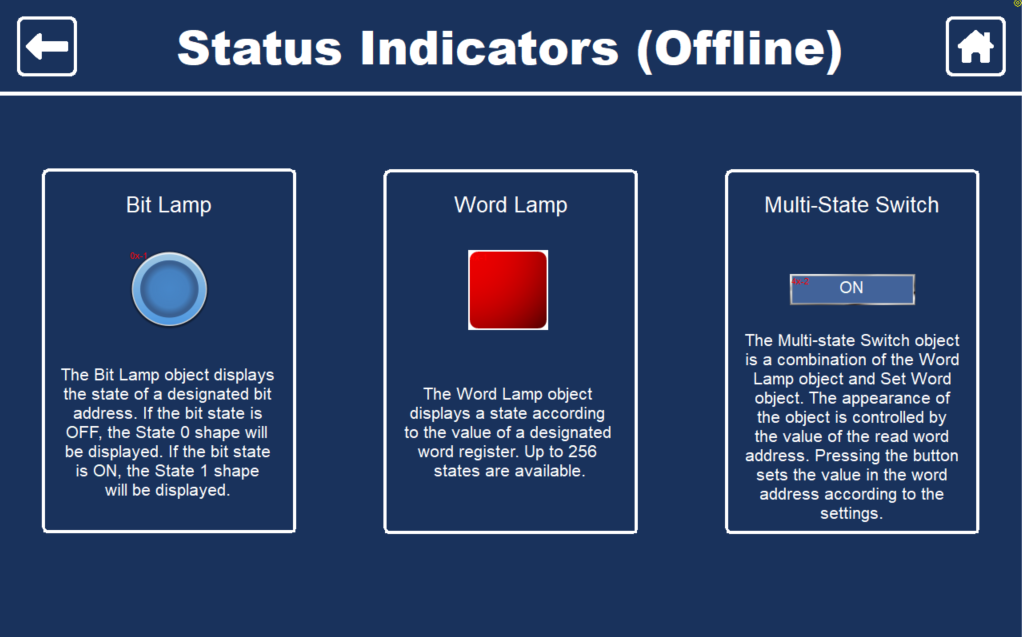
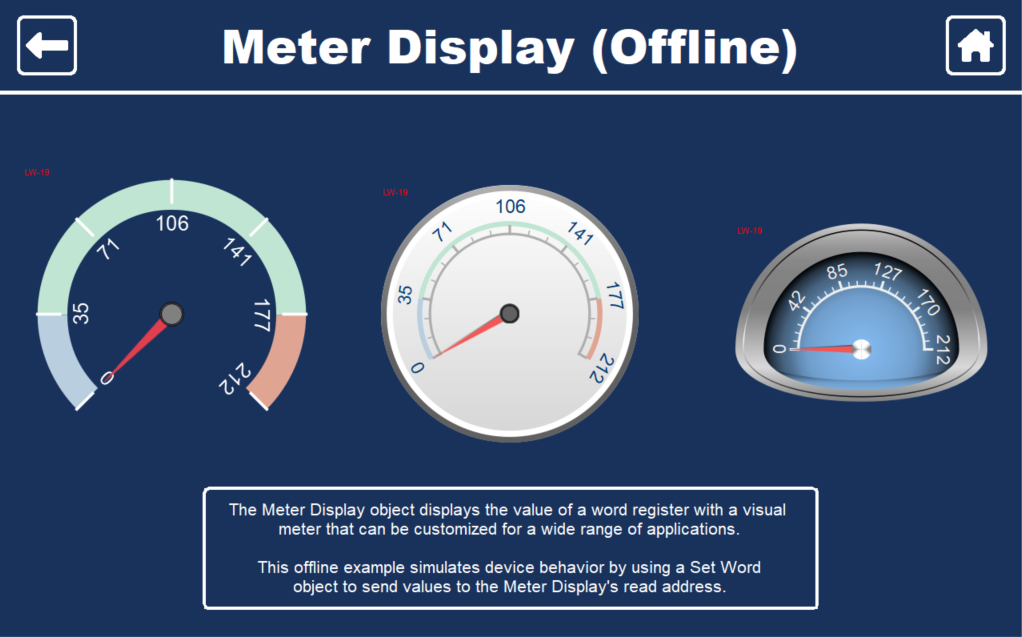
Because offline simulation does not attempt to communicate with external devices, any objects in the project assigned to external device memory addresses will not poll data during offline simulation. However, device behavior can be simulated by creating Set Bit or Set Word objects that will automatically send values to registers within the project.
Online simulation
By contrast, online simulation allows users to test a project from top to bottom, including communication with external devices and databases. This mode will mimic the full project behavior, so all external devices must be connected and able to communicate with the PC during simulation.
If the HMI program attempts to poll data from a device that is not available, the system will display the Device No Response error. Additionally, any objects placed on the active window will not be visible if they are assigned to registers on disconnected devices.

In addition to the features we discussed in offline simulation, online mode also allows programmers to troubleshoot issues with communication, including, but not limited to:
- Protocol settings
- Register assignments
- Communication tags
- PLC/HMI interactions
- Database connections
- IIoT communications
- FTP backups
- Email notifications
During online simulation, the PC will perform all of the same actions that the HMI would in the real world for a limited duration. Online mode will run for up to 1 hour with cMT Series projects, or up to 10 minutes for the HMI5000 Series. Once the simulation has timed out, it can be restarted and run again for the same period of time as needed.
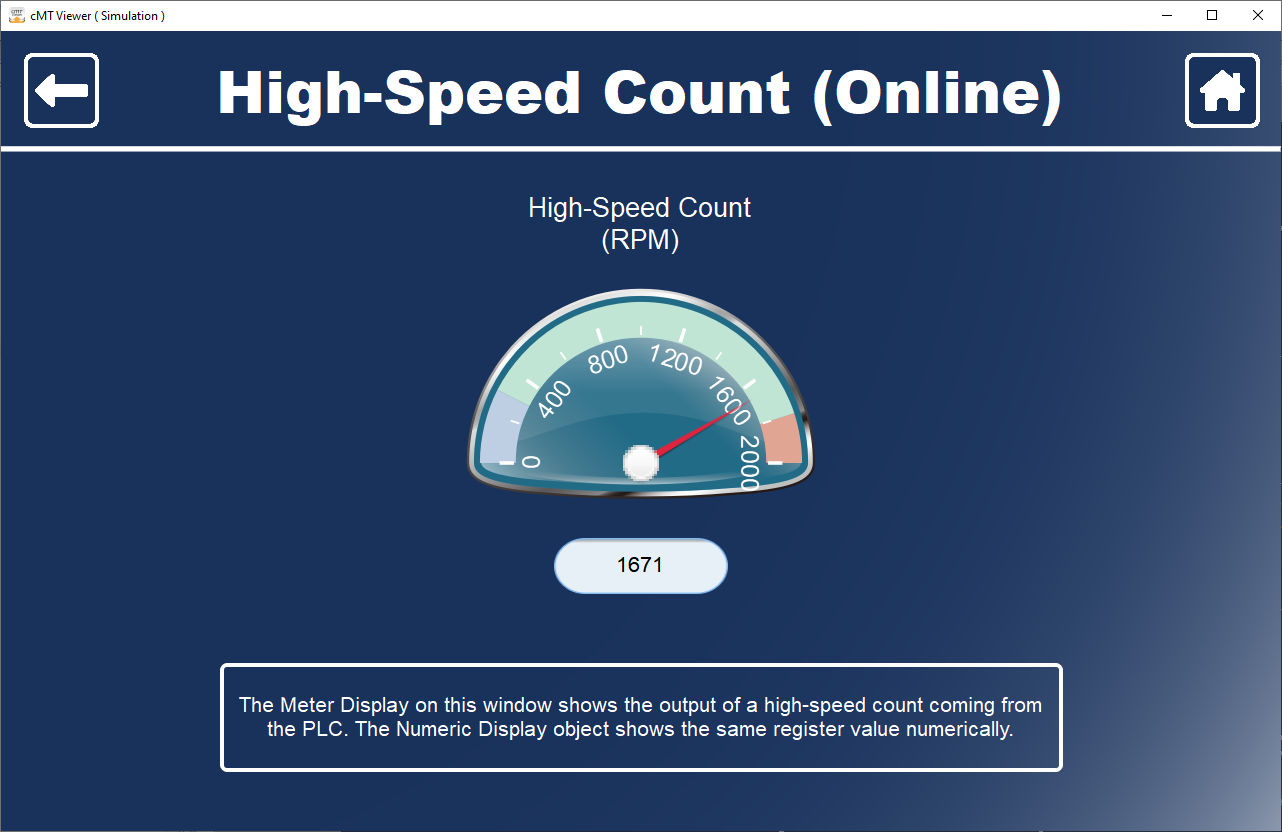
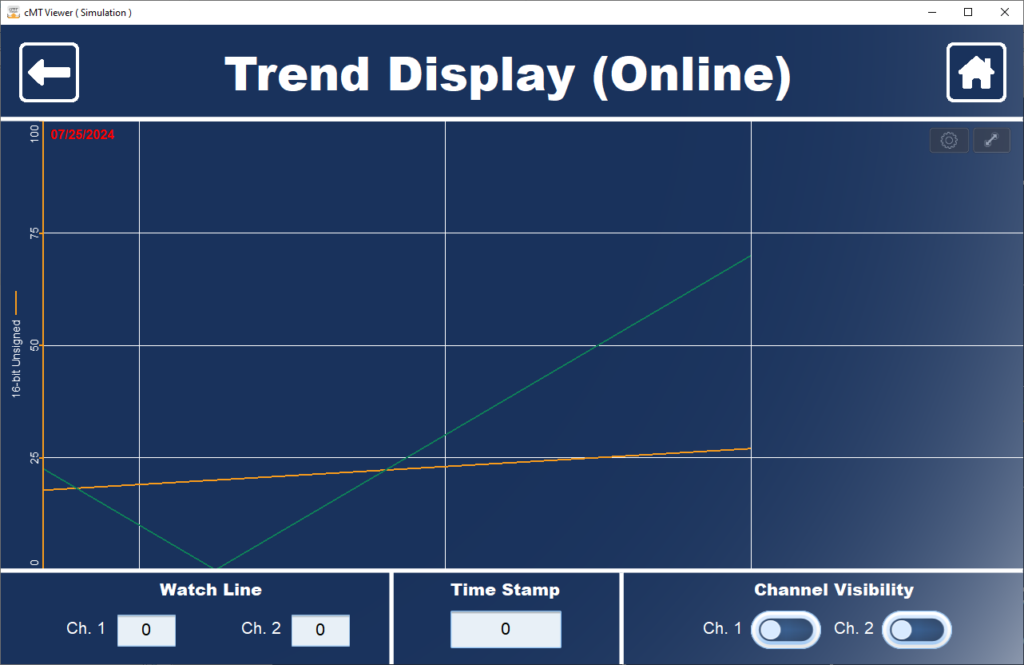
Advantages
HMI project simulation provides a host of benefits that make it an essential tool for developers of all kinds. Here are just a few of the advantages that simulation can provide:
Cost savings
The EBPro software is 100% free to use, and no hardware purchase is required to get started. Build out your user interface, program window/object behavior, develop macro functions, and much more without spending a single dollar.
Training
Having a simulated environment to test in can be invaluable for those who are new to control system design, or for experienced engineers who want to learn more about specific features. No cost up front means that developers can freely explore new ideas without breaking the bank.
Productivity
Allowing programmers to simulate a project on their PC allows for faster iteration and program development than would be possible otherwise. Developers can add new functionality to their project, then quickly see it in action without needing to reinstall the program after every edit.
Risk mitigation
HMI project simulation demonstrates how a project will behave during runtime, allowing programmers to identify and resolve issues before deployment, greatly reducing the risk of failures and costly errors when implemented in a live environment.
Running an HMI project simulation
Starting a simulation in EBPro is quick and easy. Here is a simple breakdown of the process:
1.
Open a project file in EBPro, or start a new project from the FILE menu.
2.
Add objects and configure settings as needed, then save the project file.
3.
Navigate to the Project tab at the top of the EBPro window, then select either Offline or Online Simulation from the ribbon menu.
NOTE: When running an online simulation, the PC must be connected to any devices that the project will be communicating with. Otherwise, the Device No Response error will be displayed.
4.
The compilation process will now begin. If the compilation fails, refer to the Output and Error List displayed at the bottom of the Compile window for details on any errors that may be preventing the compilation from finishing.
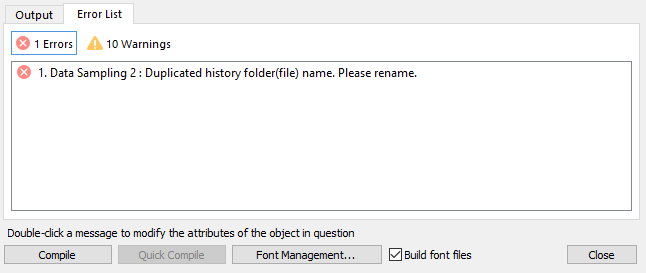
NOTE: Errors will halt the compilation process. Warnings will not prevent compilation, and are often related to minor issues that impact overall performance.
5.
Once the compilation process completes successfully, a cMT Viewer window will display with the HMI project simulation running in it. The user may now interact with the project as though it were running on an HMI.
Demo project
If you would like to try out project simulation features in EBPro with a pre-configured project, you can download our Simulation Demo project for EBPro and follow along with our video tutorial. This project includes a selection of pre-configured objects and features that can be used in online or offline simulation, and is designed to work in concert with this MapleLogic demo for Maple Systems PLCs.
Downloads
Optional hardware
No hardware is required to simulate the project in this demonstration, but it may be installed on physical hardware for testing if you so choose. The hardware used during the development of this demo is listed below:
- HMI: cMT3108XP
NOTE: If you would like to install the EBPro demo project on a different cMT Series HMI model, the target device must be changed in the System Parameters window under the Model tab. Be advised that this project is not backward compatible with HMI5000 Series devices.
Contact us
Would you like to know more? Our friendly and knowledgeable sales team can connect you to the resources you need. For information on pricing, availability, and more, send an email message to sales@maplesystems.com, or contact our team by phone at (425) 745-3229.
About the Author


